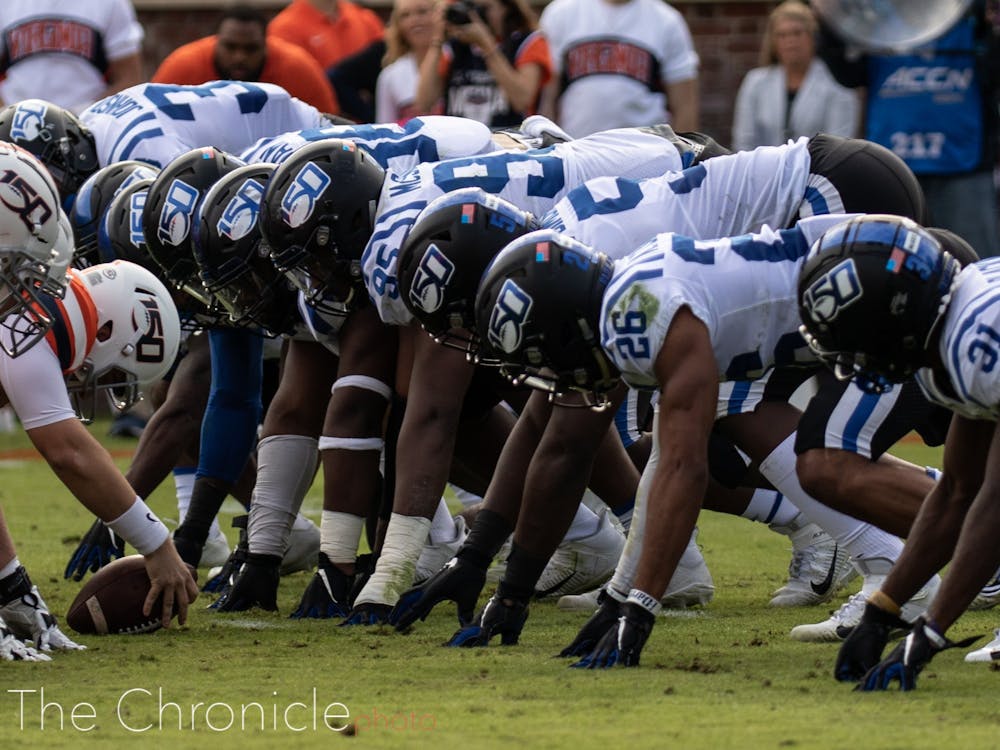If the the entry tests Duke performed on the general student body had come back positive for COVID-19 at the same rate as July entry tests for student-athletes, Duke would have had around 340 positive cases as students returned to campus. But only 24 Duke students tested positive for the coronavirus upon entry after Aug. 2. What happened?
Duke announced at the end of July that 25 student-athletes had tested positive for the coronavirus, with the majority of those positive tests coming on arrival to campus. At least one additional athlete later tested positive, and President Vincent Price said in a livestream last month that the 26 cases were among members of the football team.
About 4% of student-athletes had positive entry tests, wrote Michael Schoenfeld, vice president for public affairs and government relations, in an email. All were cleared to leave isolation by the first week in August, he wrote.
Out of the 8,531 student entry tests that were administered to the general undergraduate and graduate student body between Aug. 2 and Aug. 30, 24 were positive, giving a positivity rate of 0.28%. That’s more than 14 times lower than rate for student-athletes in July.
Entry tests for all undergraduate Duke students living on campus or returning to the Durham area were carried out Aug. 2-16. Entry tests for graduate and professional students returning to Durham were administered Aug. 17-30, so all student entry testing is now complete.
Peter Ubel, the Madge and Dennis T. McLawhorn university distinguished professor in the Fuqua School of Business, said that while he does not know the exact geographic or racial demographics of student athletes compared to the rest of the population, it is clear that certain communities are disproportionately impacted by COVID-19 infections.
“If athletes disproportionately come from those communities, you’d expect a higher rate,” Ubel said.
Schoenfeld wrote that Duke does not release demographic information for athletes compared to the general student body.
“Given the low numbers and the fact that student-athletes, like all Duke students, come from around the country, every situation will have a different set of circumstances and a different cause,” he wrote.
Don Taylor, a professor in the Sanford School of Public Policy and a founding member of the Duke-Margolis Center for Health Policy, wrote in an email that the Duke’s testing tracker makes it difficult to interpret student athlete data.
“You have to piece together press releases to have the data on athletes, since the dashboard begins [Aug. 2],” Taylor wrote.
Test results for student-athletes, coaches and staff will now only be included in overall weekly testing results, Schoenfeld wrote, citing federal health and education privacy laws. He wrote that all student-athletes are tested at least once a week, while those in football, men’s and women’s soccer, volleyball and field hockey are now tested daily.
Between Aug. 2 and Sept. 11, only 16 non-entry student entry tests came back positive, including both surveillance and contact traced tests. There have been 20,808 non-entry tests, for a positivity rate of 0.08%.
Ubel noted that “rules help establish norms,” citing the example that government-mandated mask laws tend to increase the percentage of people wearing masks even when there is initial backlash, because there rapidly becomes a social pressure to wear a mask.
“Duke has established social norms that are this really powerful influence on behavior on campus right now,” Ubel said. “It’s creating this culture of people wearing masks, and that’s probably the most important thing we can do in slowing the spread of the virus.”
Ubel speculated that these norms likely have a particularly strong influence on athletic teams, because high infection rates could put their seasons at risk.
“Getting back to athletics, my guess is that you’re seeing quite strong social norms. Because their seasons are on the line,” Ubel said.
According to Schoenfeld, student-athletes are required to comply with additional rules and regulations that the rest of the student body may not be bound by.
“Their practices and team activities are closely regulated and student athletes have to observe their team rules in addition to the university policies,” he said.
This includes five fall sports teams labeled as high risk by the Atlantic Coast Conference Medical Advisory Group—the same teams that are tested daily—having to sequester following games, and all teams traveling only by charter bus or plane, President Vincent Price announced in an email to the Duke community Sept. 11.
Get The Chronicle straight to your inbox
Signup for our weekly newsletter. Cancel at any time.

Anna Zolotor is a Trinity senior and recruitment chair for The Chronicle's 118th volume. She was previously news editor for Volume 117.

